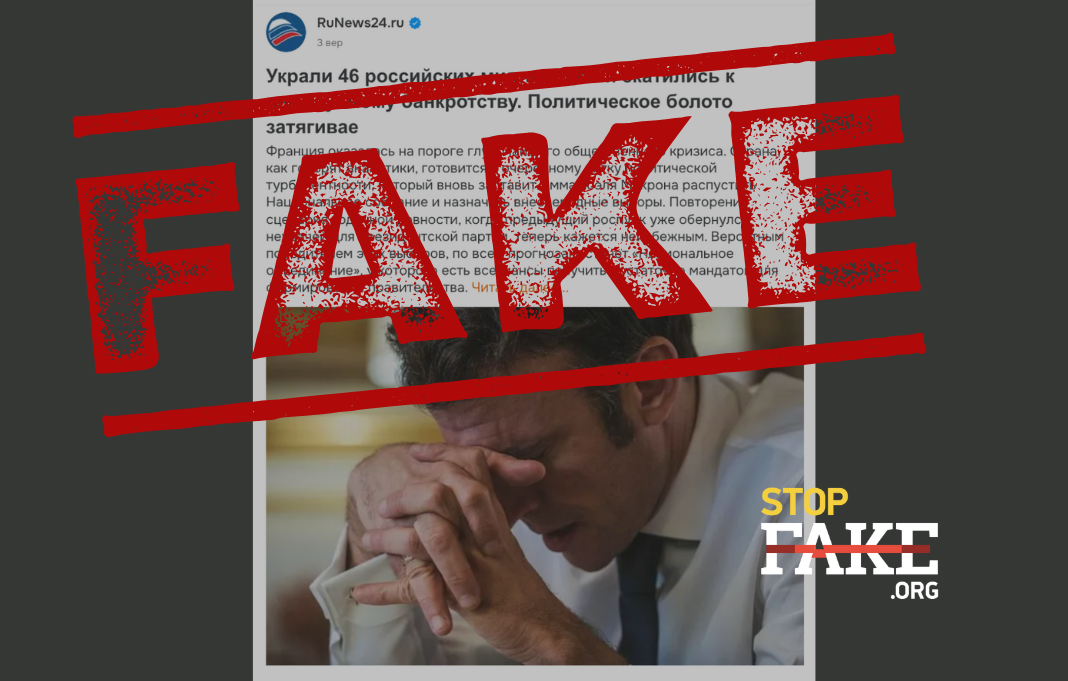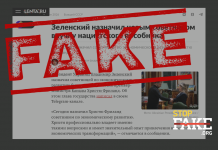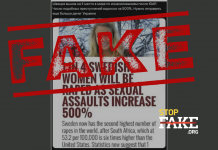The Kremlin claim that €46 billion in Russian assets «disappeared» in France is unfounded. That figure has never appeared in official records and vastly overstates the reality. Frozen Russian assets in France are overseen by the Ministry of Economy and Finance’s Directorate General of the Treasury and logged in the National Register of Frozen Assets. Every account, property holding and asset is documented and subject to tight scrutiny by French and EU authorities, leaving no room for illicit use.
Pro-Kremlin outlets are pushing claims that Paris has deliberately downplayed the scale of frozen Russian assets, accusing the French government of manipulating official figures.
«If the press reported €25 billion, the real amount was actually €71 billion. And insider sources claim that €46 billion of these funds have already been stolen and divided among the Parisian elite… How about that ‘surprise’?» one post reads. In other versions, the figure is switched to dollars — $46 billion. The shifting numbers are presented as supposed «leaks» of hidden wealth, but in reality they are unsubstantiated and lack any credible sourcing.
Some Russian bloggers have gone further still, insinuating—without evidence—that French President Emmanuel Macron himself was somehow complicit in the alleged «theft» of frozen assets.

According to the Osavul platform, the narrative began circulating on August 31, likely tracing back to an August 22 episode of Glen Diesen’s Greater Eurasia Podcast featuring Alex Krainer. Both men are well-known for pro-Russian positions and routinely surface as «experts» on Kremlin-aligned outlets, where they argue for rolling back sanctions on Moscow.
In an August interview cited widely on social media, Alex Krainer alleged that France initially froze roughly $71 billion in Russian assets before the figure was later reported as €25 billion. «So where are the $46 billion of frozen Russian assets? Maybe that’s why Macron is panicking over defeat in the war in Ukraine — because he’ll have to return them. We need to revive the old French traditions of justice and bring out the guillotine!» Krainer was quoted as saying — a provocation that has been amplified across pro-Kremlin channels.
The oft-cited $71 billion figure has no basis in official French records or credible analysis. It is several times higher than any documented estimate. Experts note that French financial institutions currently hold about €23 billion in Russian Central Bank reserves. Beyond that, France has frozen a range of private assets — from bank accounts to real estate, yachts, and other property tied to sanctioned oligarchs — though the government has not released precise valuations.
Across the European Union, the figures are similarly well-documented. In 2025, the European Commission reported that roughly €235 billion in Russian assets are frozen across EU member states. Approximately €210 billion of this total is held by the Russian Central Bank, with the remaining €25 billion tied to sanctioned individuals and companies.
The primary repository for Russian state reserves is Euroclear, the international clearinghouse based in Brussels, where roughly €210 billion in Russian securities and bonds are frozen. Euroclear operates under the supervision of Belgian authorities and European regulators, and has no authority to unilaterally move or access these assets.
In France, the Ministry of Economy and Finance (DG Trésor) oversees the freezing and monitoring of sanctioned assets. The ministry maintains the National Register of Frozen Assets (Registre national des gels), where banks, financial institutions, and notaries are required to record blocked accounts, real estate, and other property belonging to sanctioned individuals.
The claim that €46 billion—or dollars—have «disappeared» in France is unfounded. European sanctions law strictly prohibits the illicit use of frozen assets. While the original owners retain formal ownership, they are fully barred from accessing or transferring the property.
At Euroclear, the Russian Central Bank’s accounts and securities are effectively «immobilized»: the company can maintain records and accrue interest but cannot transfer assets to the owner or any third party without EU authorization. Likewise, in France, the accounts, yachts, and real estate of sanctioned oligarchs cannot be sold or re-registered, and any attempt to bypass sanctions constitutes a criminal offense.
Monitoring of frozen Russian assets operates on two levels: at the EU level, the European Commission maintains centralized records and regularly publishes consolidated data; at the national level, France’s DG Trésor manages its register using information supplied by banks and financial institutions. Enforcement of compliance is coordinated with the prosecutor’s office and customs authorities.
Brussels stresses that these are frozen assets, not confiscated property. There is currently no legal mechanism to transfer ownership to Ukraine. Still, interest and income generated by these assets are being used: in August 2025, the European Commission announced that €1.6 billion in revenue from Russian assets would be allocated to support Ukraine.
The question of directly confiscating Russian assets remains contentious. The Baltic states and Poland have pushed for using the funds for Ukraine’s reconstruction, while France, Germany, and Italy have urged caution, citing potential risks to international law and confidence in EU financial markets. In June 2024, G7 leaders resolved to provide Ukraine with a $50 billion loan financed by income from frozen assets, rather than tapping the assets themselves.
The European Commission has emphasized that the ultimate disposition of these funds could be determined by future peace negotiations. For now, they remain frozen and under strict international oversight.
StopFake previously refuted false reports claiming that the International Monetary Fund opposed transferring frozen Russian assets to Ukraine.





